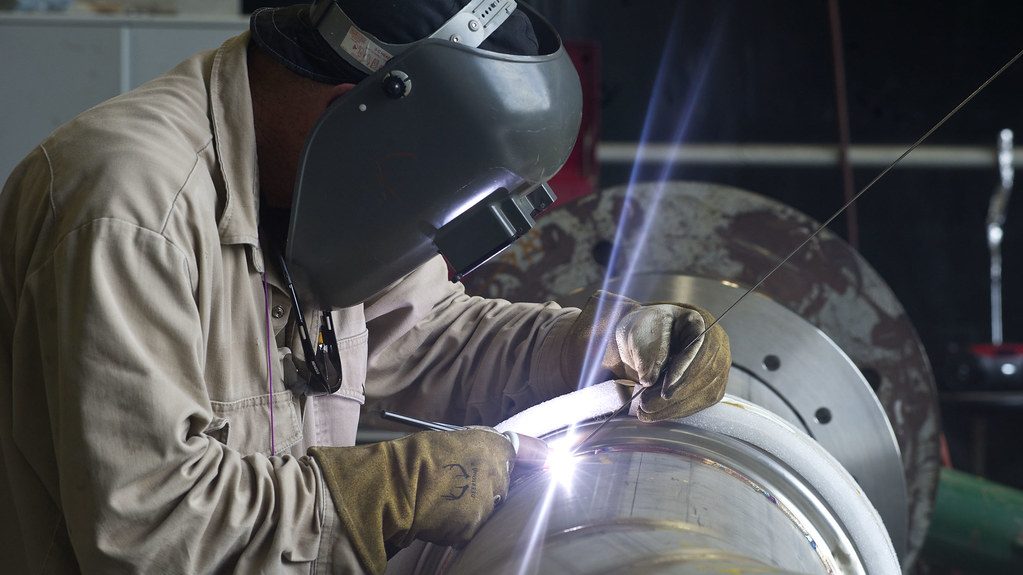
The Fundamentals of TIG Welding
TIG (Tungsten Inert Gas) welding, also known as GTAW (Gas Tungsten Arc Welding), is a precise, clean, and versatile welding process favored by professionals for its high-quality results. This process uses a non-consumable tungsten electrode and an inert shielding gas, usually argon, to protect the weld from contamination. TIG welding is suitable for various metals, including steel, stainless steel, aluminum, magnesium, and even exotic metals like titanium. To master TIG welding, it’s essential to understand the basics, including equipment setup, proper technique, and safety precautions.
Choosing the Right Equipment
The first step in TIG welding is selecting the appropriate equipment. You’ll need a TIG welding machine, which often comes with an integrated high-frequency start mechanism for easy arc ignition. Additionally, you’ll need a torch with a tungsten electrode, a gas regulator, and an appropriate filler material. It’s crucial to select the correct tungsten electrode type and size, as well as the suitable filler material, based on the metal you’re working with. Consult the welding materials and manufacturer’s guidelines to determine the best choices for your specific project.
Proper TIG Welding Technique
TIG welding requires a steady hand and precise control of the welding torch and filler material. To achieve clean, consistent welds, follow these steps:
- Clean the workpiece: Remove any contaminants, such as rust, paint, or oil, to ensure a strong, clean weld.
- Set up your welding machine: Adjust the amperage, gas flow rate, and other settings according to the metal type, thickness, and electrode size.
- Hold the torch at a 10-15 degree angle from the workpiece, with the tungsten electrode approximately 1/8 inch away from the metal surface.
- Initiate the arc: Use the high-frequency start mechanism or scratch-start technique to ignite the arc.
- Maintain a consistent arc length and travel speed, moving the torch smoothly along the joint.
- Add filler material as needed, keeping the filler rod in the shielding gas to prevent contamination.
- Control the heat: Use a foot pedal or fingertip control to adjust the amperage, ensuring proper penetration and avoiding overheating the workpiece.
By practicing these techniques and adjusting your approach based on the metal type and joint configuration, you’ll soon be creating professional-quality welds with TIG welding.
Safety First: The Importance of Protective Gear
TIG welding, like any welding process, involves potential hazards. It’s essential to prioritize safety by wearing proper protective gear and following safe work practices. Wear a welding helmet with a suitable shade for TIG welding, flame-resistant clothing, gloves, and safety shoes. Ensure adequate ventilation to avoid inhaling harmful fumes, and always follow the manufacturer’s guidelines for equipment use and maintenance. Familiarize yourself with the importance of safety in welding and adhere to the best practices.
Advanced TIG Welding Techniques and Tips
Once you’ve mastered the basics of TIG welding, consider exploring more advanced techniques to elevate your skills further. Learn about pulse TIG welding, which allows for better heat control and improved weld appearance on heat-sensitive metals. Experiment with different tungsten electrode types, such as ceriated, lanthanated, or zirconiated, to see how they affect the weld quality and stability. Don’t be afraid to seek advice from experienced welders, attend [welding
training and certification](https://welderfacts.com/welding-training-and-certification/) programs, or join online forums to learn from others in the industry.
Conclusion
TIG welding is a valuable skill for both hobbyists and professional welders due to its versatility and high-quality results. By understanding the fundamentals, practicing proper technique, and prioritizing safety, you’ll be well on your way to unlocking the secrets of the pros. As you continue to develop your skills, explore advanced techniques, and network with other welders, you’ll soon become a TIG welding expert.
Frequently Asked Questions
- What metals can be TIG welded?
TIG welding can be used on various metals, including steel, stainless steel, aluminum, magnesium, copper, brass, and exotic metals like titanium and Inconel. - What type of shielding gas is used for TIG welding?
Argon is the most common shielding gas used for TIG welding due to its ability to protect the weld from contamination and provide excellent arc stability. - Is TIG welding more challenging to learn than other welding processes?
TIG welding requires more precision and control than other welding processes like MIG or stick welding. It may be more challenging for beginners, but with practice, anyone can master TIG welding. - What is the main difference between TIG and MIG welding?
TIG welding uses a non-consumable tungsten electrode and requires a separate filler material, while MIG welding uses a consumable wire electrode fed through the welding gun. TIG welding generally produces cleaner, higher-quality welds, but MIG welding is often faster and easier for beginners. - Can TIG welding be used for thick metals?
Yes, TIG welding can be used for thick metals, but it may require multiple passes and higher amperage settings. In some cases, preheating the workpiece may also be necessary to ensure proper penetration and weld quality.
Meta Data for Joe
Article Title: TIG Welding 101: Unlock the Secrets of the Pros
Tags: TIG welding, welding techniques, tungsten electrode, shielding gas, welding safety, welding equipment, filler material, welding process, arc stability, pulse TIG welding, welding training, advanced techniques
Meta Description: Learn the basics of TIG welding, from equipment selection to proper technique and safety precautions. Unlock the secrets of the pros and elevate your welding skills.
